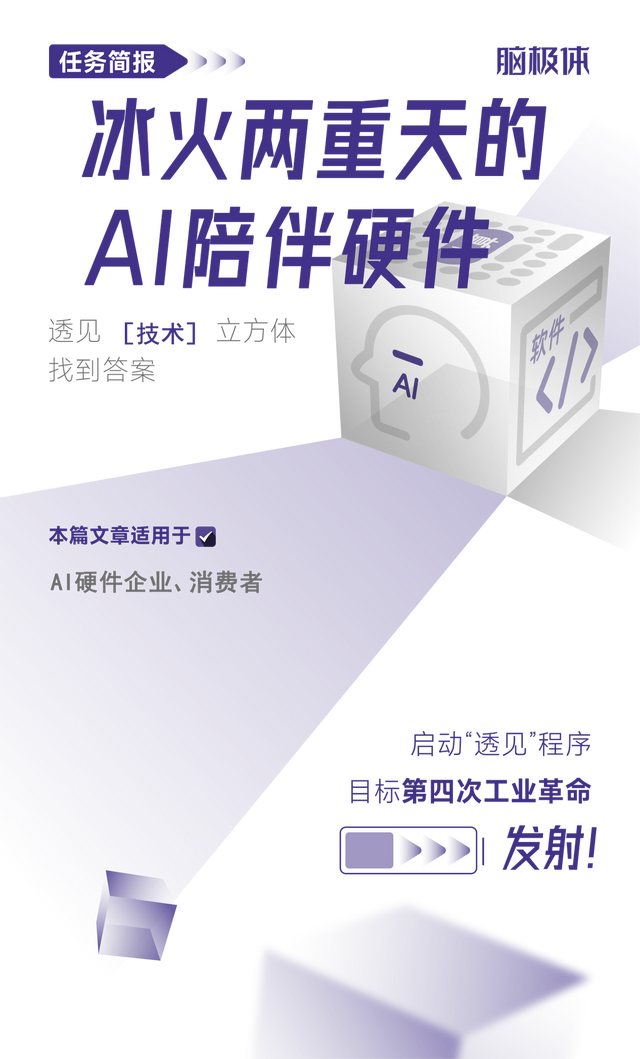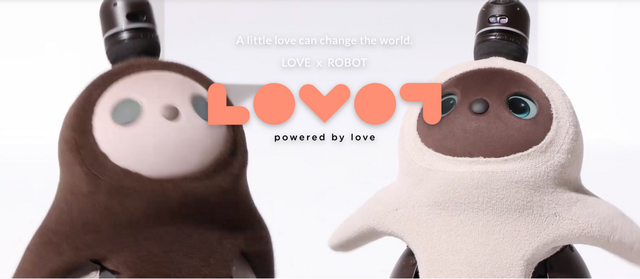AI Companion Hardware: A World Full of Contrasts
![]() 09/05 2025
09/05 2025
![]() 474
474

Have you noticed that, in some way, our companions are no longer confined to just ChatGPT on a screen? AI is breaking free from the limitations of the virtual realm, taking on physical forms, and quietly integrating into every nook and cranny of our lives. On your desk, a compact AI robot greets you when you return home, responding to your joys and sorrows. On your wrist, a smart health bracelet not only precisely monitors your heart rate but also gently vibrates to offer breathing guidance when you're feeling anxious.
In 2025, AI companion hardware is quietly emerging as a new trend in the tech world, with business titans like Altman, Zhu Xiaohu, and Lei Jun placing their bets. As large language model technology advances and hardware costs decline, AI is evolving from a virtual presence on phones and computers into a tangible companion.
So, how did AI companion hardware enter the public's field of vision? What challenges does it face in its path to commercialization?

Since 2025, a wave of leading tech companies has set their sights on the AI companion hardware sector. OpenAI acquired io, an AI hardware startup founded by Apple's former chief designer, for $6.5 billion. Lei Jun invested in Beipei Technology, which specializes in AI companion toys. ByteDance stepped into the AI companion market, developing companion dolls like Xianyanbao and smart earphones Ola Friend.
With the advancement of large models and the growth of emotional consumption demand, a variety of AI companion hardware with different forms and functions has emerged on the market.
AI desktop robots have become the most popular and representative category due to their highly humanized appearance, agile interactive feedback, and moderate pricing. These products typically feature a rounded, cute bionic design with high-degree-of-freedom joints, enabling multimodal interactions with users through head turns, eye light effects, and even limb movements. They sway happily when praised and actively play music when detecting low mood. For example, the Rux Robot, integrated with ChatGPT, enables continuous, memory-based, and emotional conversations. Users can customize its magnetic accessories via 3D printing and design its expressions, sounds, and behavior patterns through open APIs to satisfy their pursuit of unique personalities.

AI smart companion bracelets are also quietly gaining traction in the market. Beyond traditional health monitoring functions, these products deeply integrate emotional interaction modules, capable of not only monitoring heart rate and sleep quality but also providing voice comfort, positive encouragement, and even breathing guidance training through built-in micro speakers and microphones. For instance, the Xiangmeng Ring bracelet allows easy connection to a phone with a simple touch, enabling conversations with favorite characters.

AI voice pendants and badges, as lightweight emotional accessory products, offer the smallest form factor and the most convenient wearability. The "BubblePal" smart pendant by Yueran Innovation can be hung on a backpack, keychain, or plush toy, providing short voice interactions, schedule reminders, or fun conversations at any time. Despite limited computing power, its multi-day battery life, low price of tens of yuan, and flexible usage have made it an emerging trendy accessory among students, with sales exceeding 100 million yuan.

Why have these AI companion hardware products stood out in such a short period, even forming differentiated competition with traditional smart hardware?
On one hand, user demands are undergoing profound changes. More and more people are no longer satisfied with virtual interactions mediated by mobile apps or screens; instead, they expect AI to have an embodied, touchable physical form. Embodied interactions can provide more authentic emotional comfort and companionship experiences, satisfying individuals' intrinsic needs to combat loneliness and seek psychological support.
On the other hand, technological conditions are becoming increasingly mature. Improvements in AI chip computing power, reductions in sensor costs, and the gradual implementation of edge-side large models have collectively laid the technical foundation for highly interactive, low-latency companion hardware. Functions that previously existed only in laboratories or high-end products can now be mass-produced at affordable prices.
Driven by both demand and technology, AI companion hardware has quietly risen and flooded the market. It is no longer a pseudo-need or a geek toy but has gradually evolved into an emerging hardware category with clear emotional value and practical functionality.

Although AI companion hardware is a newcomer, it has already garnered significant attention and demonstrated strong market potential.
From 2025 to 2028, the market size of China's AI emotional companion industry is expected to grow from 3.866 billion yuan to 59.506 billion yuan.
So, what sets AI hardware apart from traditional hardware?
First and foremost, the core appeal of AI hardware lies in its high intelligence, blending tool attributes with emotional value. Traditional hardware often serves merely as a tool, performing preset, deterministic tasks. In contrast, AI hardware possesses perception, understanding, and even decision-making capabilities, enabling it to proactively respond to user needs and achieve bidirectional interactions. Nearly 970 million people worldwide suffer from mental health issues such as depression and anxiety, with loneliness and social isolation becoming prevalent problems. The emergence of AI companion hardware provides a new emotional outlet. These devices not only perform functional tasks like information queries and schedule reminders but also offer emotional comfort through voice conversations and behavioral feedback.
In terms of appearance, the "non-human but cute" design bridges psychological distance, encouraging people to establish long-term emotional connections. For example, LOVOT, developed by Japan's GROOVE X, combines the roundness of a panda with the clumsiness of a penguin, avoiding the uncanny valley effect while triggering caregiving instincts through its soft appearance. Sony's robot dog Aibo deliberately retains certain mechanical features to clarify its artificial identity while simulating the behavior patterns of real pets through agile movements and responses.

Furthermore, AI hardware offers a relaxed, pressure-free companionship experience. Unlike traditional robots requiring complex programming and frequent maintenance, the new generation of AI companion hardware emphasizes seamless integration into daily life, pursuing minimalist usage principles. Users do not need to learn professional commands; these devices can adapt to their environment and continuously learn user habits in the background. This unobtrusive presence makes AI hardware a quiet life companion, providing readily accessible interactivity without becoming a new burden.
This omnipresent yet invisible companionship model aligns perfectly with modern life rhythms. Users do not need to set aside dedicated time for AI interactions; emotional support naturally arises in their daily lives.

While the AI companion hardware sector is indeed bustling, its commercialization journey has not been smooth sailing, with several failed examples already emerging in the market.
Embodied/Moxie in the education sector announced its shutdown in 2025 due to excessively high pricing and insufficient update frequency. The wearable AI device AI Pin, which received $240 million in investment, was acquired at a low price after experiencing a 50% return rate due to performance issues. Smart Emergence reported that multiple manufacturers' AI plush toys faced return rates as high as 30%-40% on e-commerce platforms.
Currently, the AI companion hardware sector faces a core challenge: the disconnect between product and market alignment.
Many products focus solely on showcasing technical prowess and stacking features while neglecting genuine user needs. They fail to clearly answer two fundamental questions: Why do users need a standalone hardware device instead of opening an app on their phones? Who is the core target user for this product—children, the elderly, urban solo dwellers, or anxious professionals? Some users complain that the AI hardware they purchase requires internet connections, frequent updates, and countless button operations, making it overly complex and uninteresting to use.
Moreover, a significant gap remains between technological maturity and the ideal seamless companionship experience. Despite manufacturers' emphasis on multimodal interactions and emotional computing in their promotions, practical issues such as voice recognition errors in noisy environments, dialogue logic disruptions, and the long-term memory deficiencies most criticized by users make the so-called "intelligence" seem mechanical and fragmented. Some users joke that it feels like interacting with 365 different AIs in a year rather than a single partner who continuously understands them.
From a product perspective, technological route homogeneity and high levels of standardization make it difficult for outstanding players to emerge. Most products on the market currently rely on open-source large models from a few tech companies or similar voice solutions, lacking deep tuning and data accumulation in vertical scenarios. Products from different brands are highly similar in dialogue capabilities and service content, failing to form competitive barriers.
Finally, unlocking user willingness to pay remains a major challenge. Many manufacturers hope to replicate the success path of the software industry by implementing subscription service models, generating continuous revenue through subsequent content updates, exclusive skills, or advanced emotional features. However, users generally resist additional paid subscriptions for such hardware: "After spending hundreds or even thousands of yuan on the hardware, why should I pay extra to chat?" Subscription-based payment has not yet gained widespread acceptance in the domestic market, with users fearing that once they pay, it will become a bottomless pit. Both payment conversion rates and long-term retention rates are under pressure.

However, amid the increasingly fierce competition in the AI companion hardware market, where many products struggle due to homogenization and over-design, some have broken through and won user favor. The free IP "Wa San Sui" AI plush toy, capable of fluent conversations and bedtime storytelling, has sold 20 million units globally. The palm-sized smart hanger BubblePal, relying on basic dialogue functions, sold 250,000 units in less than a year, with sales exceeding 100 million yuan.
So, what kind of AI companion hardware do users truly prefer?
First, in terms of market positioning, sell nostalgia rather than just merchandise. In the era of the rising emotional economy, users purchase not only hardware but also emotional value and spiritual belonging. AI toys based on mythical creatures from "The Classic of Mountains and Seas" quickly went viral on short video platforms and rapidly opened up the e-commerce market with their playful and mischievous nature. LOVOT, developed by Japan's GROOVE X, deeply integrates into the otaku healing culture, achieving commercial success through its adorable appearance and desire-to-be-loved persona. This indicates that companies should connect with users on an emotional level and construct their own cultural narratives rather than merely selling functions.

Second, in terms of functional design, simplicity and perfection outweigh complexity and redundancy. While some highly funded projects have failed, many grassroots projects have gained popularity through exceptional user experiences. Products like Xiaozhi AI may appear slightly simplistic in hardware design, but they optimize core dialogue capabilities to the extreme. Their rapid response speeds and high emotional intelligence endow them with a lively personality. This minimalist approach inspires users' secondary creativity and sharing desires, creating a wave of self-propagation.
Finally, a reasonable pricing strategy is the key lever to unlock the mass market. Setting the base model at a price range of tens to a hundred yuan effectively lowers the threshold for trial, rapidly accumulating users and brand recognition. Subsequently, by launching advanced functional versions, co-branded products, and other high-value-added offerings, companies can penetrate the high-end market and achieve brand upgrading. This low-entry, high-growth strategy ensures market penetration in the early stages while opening up space for subsequent profit growth.
Ultimately, at the current stage where technology still has limitations, the key to breaking through with AI companion products lies precisely in subtracting from functionality and adding to emotion. Companies should not strive to make their products all-powerful but rather ensure they excel in specific areas and provide sufficient warmth. Only products that offer sustained, gentle companionship can touch people's hearts and survive longer in the fierce market competition.






